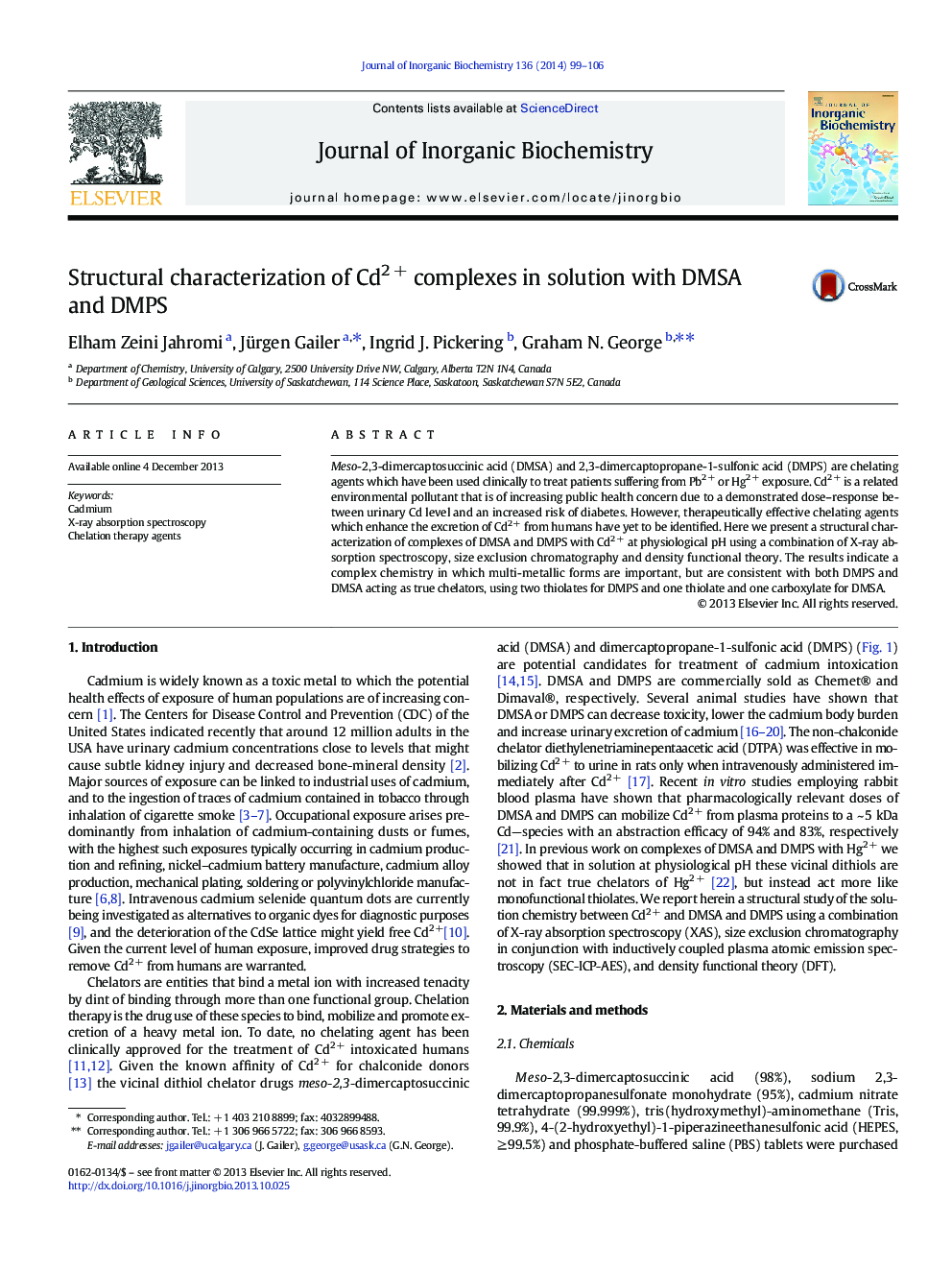| Article ID | Journal | Published Year | Pages | File Type |
|---|---|---|---|---|
| 1317380 | Journal of Inorganic Biochemistry | 2014 | 8 Pages |
•DMSA and DMPS can both act as chelators for Cd2 +.•DMPS can bind through two thiolate groups.•DMSA can bind through one thiolate and one carboxylate groups.•Both DMPS and DMPS form poly-metallic complexes.
Meso-2,3-dimercaptosuccinic acid (DMSA) and 2,3-dimercaptopropane-1-sulfonic acid (DMPS) are chelating agents which have been used clinically to treat patients suffering from Pb2 + or Hg2 + exposure. Cd2 + is a related environmental pollutant that is of increasing public health concern due to a demonstrated dose–response between urinary Cd level and an increased risk of diabetes. However, therapeutically effective chelating agents which enhance the excretion of Cd2 + from humans have yet to be identified. Here we present a structural characterization of complexes of DMSA and DMPS with Cd2 + at physiological pH using a combination of X-ray absorption spectroscopy, size exclusion chromatography and density functional theory. The results indicate a complex chemistry in which multi-metallic forms are important, but are consistent with both DMPS and DMSA acting as true chelators, using two thiolates for DMPS and one thiolate and one carboxylate for DMSA.
Graphical abstractX-ray absorption spectroscopy, density functional theory and size exclusion chromatography with element specific detection provide details of the solution structure of Cd2 + complexes in with the chelators dimercaptopropanesulfonic acid and dimercaptosuccinic acid.Figure optionsDownload full-size imageDownload as PowerPoint slide
